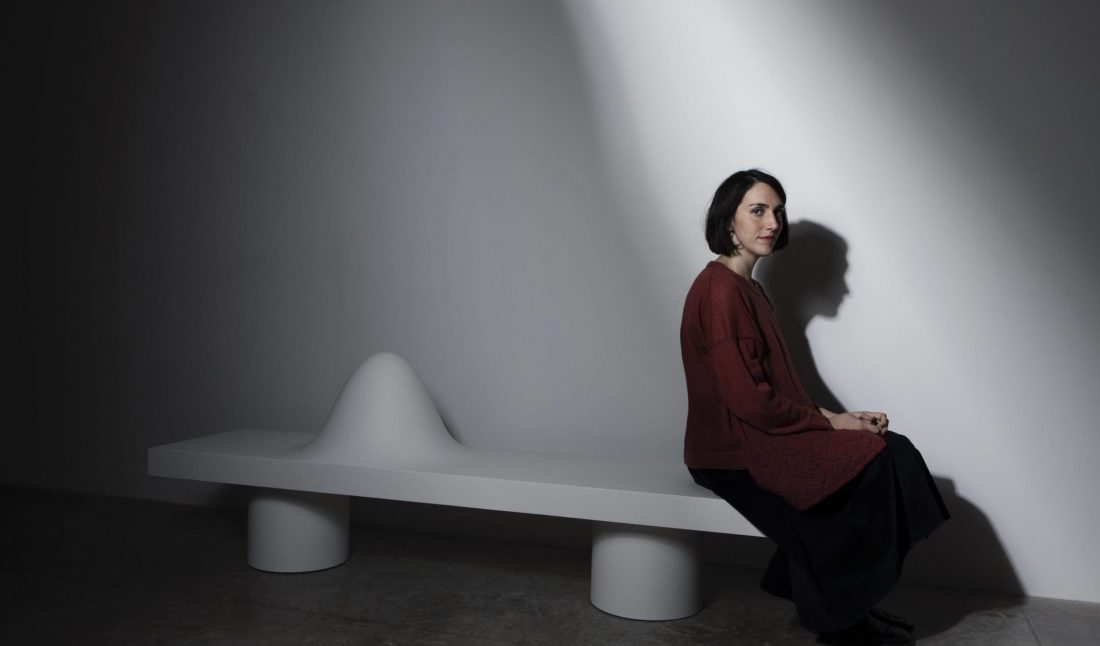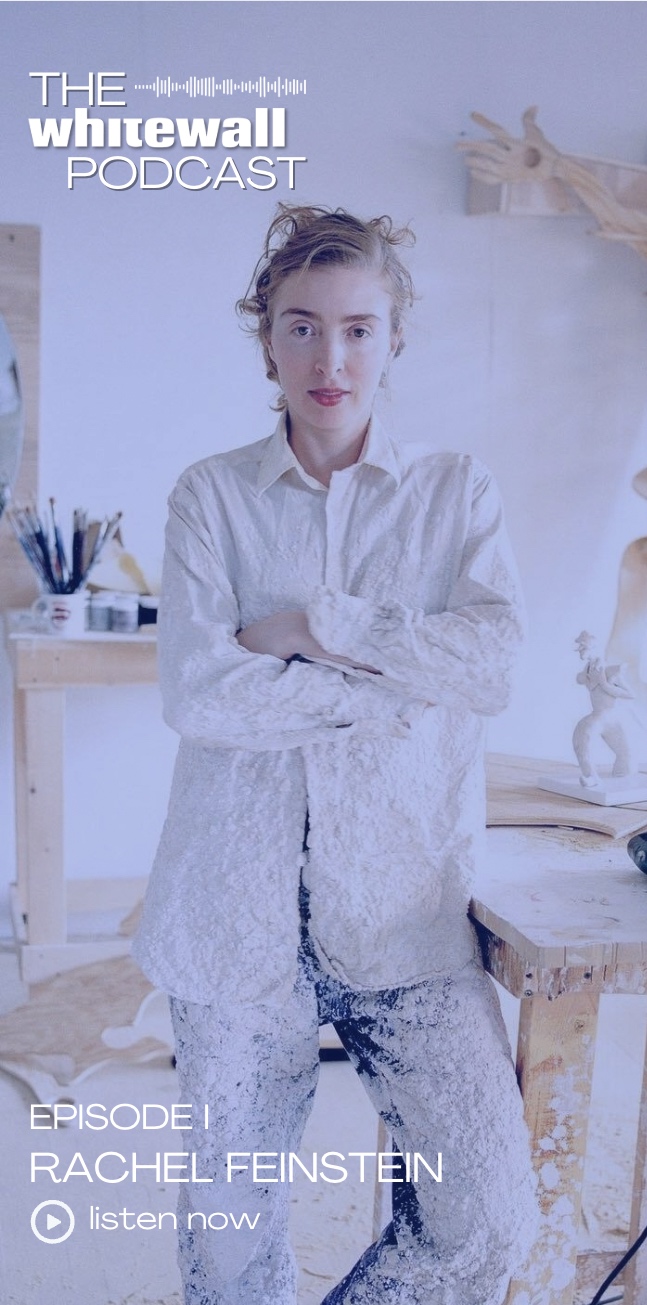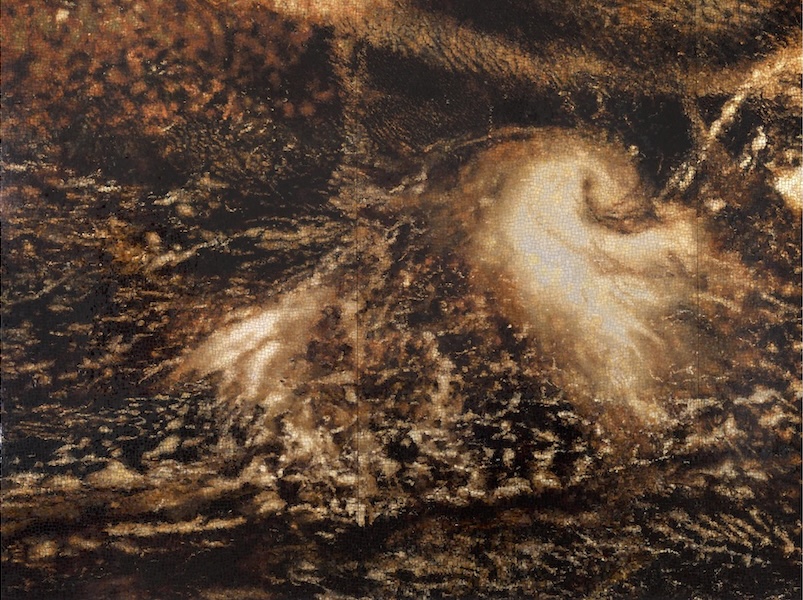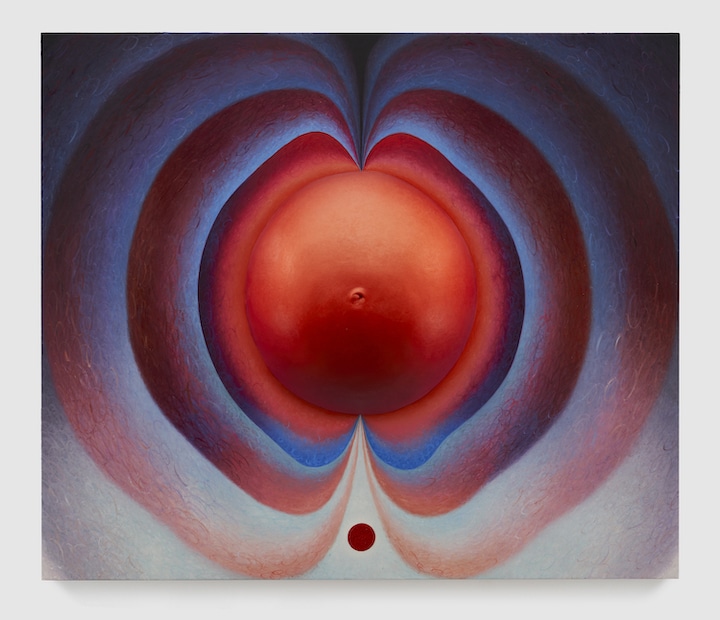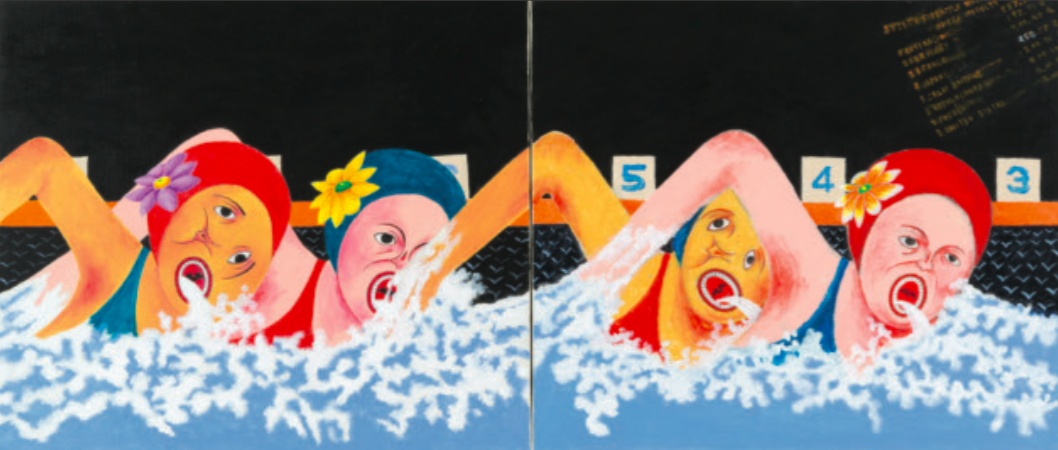Najla El Zein’s recent solo show at Friedman Benda in New York (February 28–April 6, 2019) told the story of her own personal transformation in recently becoming a mother. More than telling the story of motherhood, it embodied the weight and feeling of being a woman. Through three series—“Distortion,” “Fragmented Pillar,” and “Seduction”—the Beirut-based designer composed benches, columns, and sculptures out of stone, plaster, and sand, playing with scale, fragility, strength, and balance.
The artist is known for creating work that is tactile in nature, and these works evoke an experience of both connection and isolation, seduction and disturbance. For El Zein, we learned that the process of creating “Transition” was a liberating journey—one in which she began to understand herself and her new role.
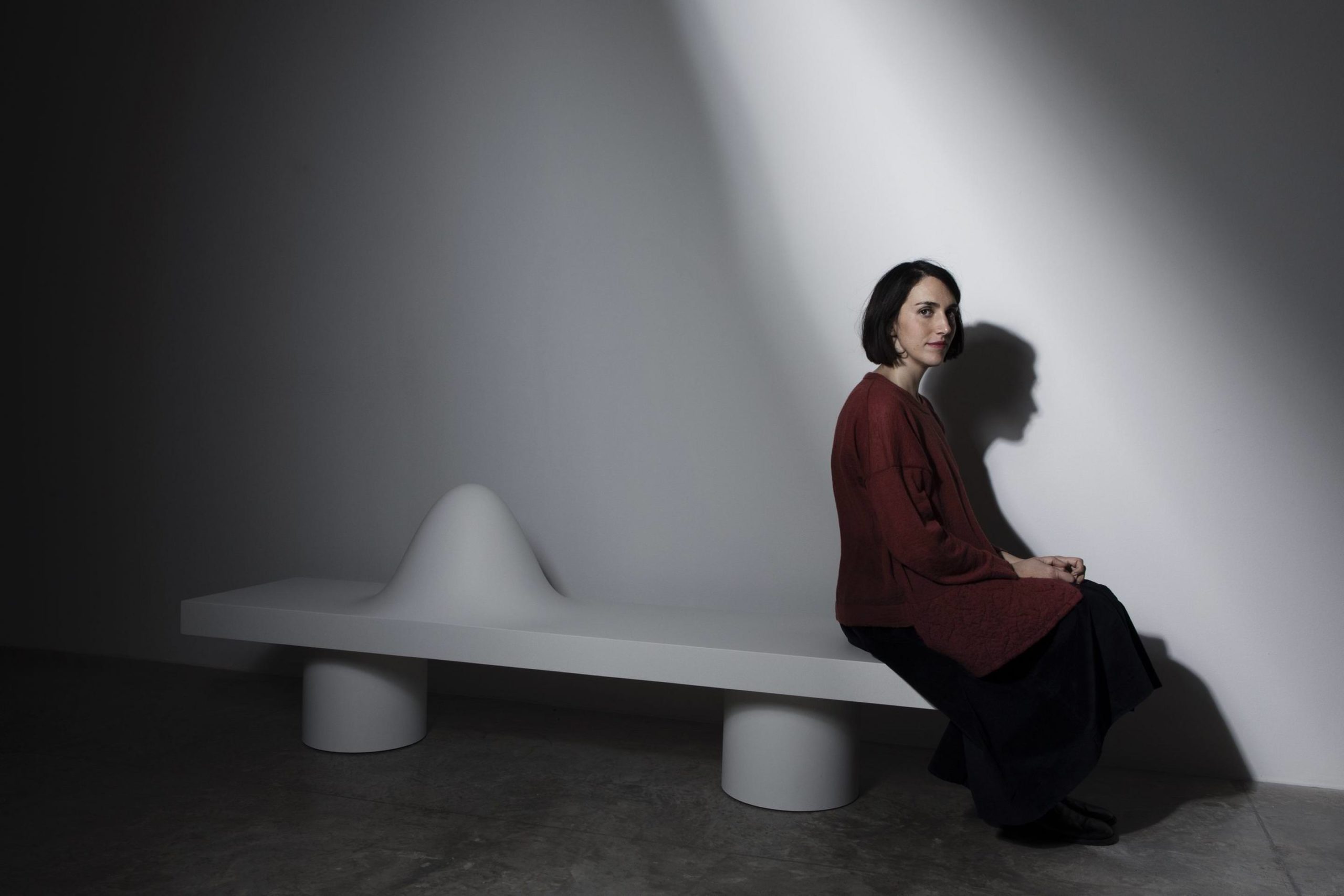 Photo by Steve Benisty
Photo by Steve Benisty
WHITEWALL: Your show “Transition” debuted three series made over the past two years. These new bodies of work reflect your own personal journey. Can you share more on that?
NAJLA EL ZEIN: “Transition” is the story of a woman, a mother, a lover. I needed to understand these concepts better.
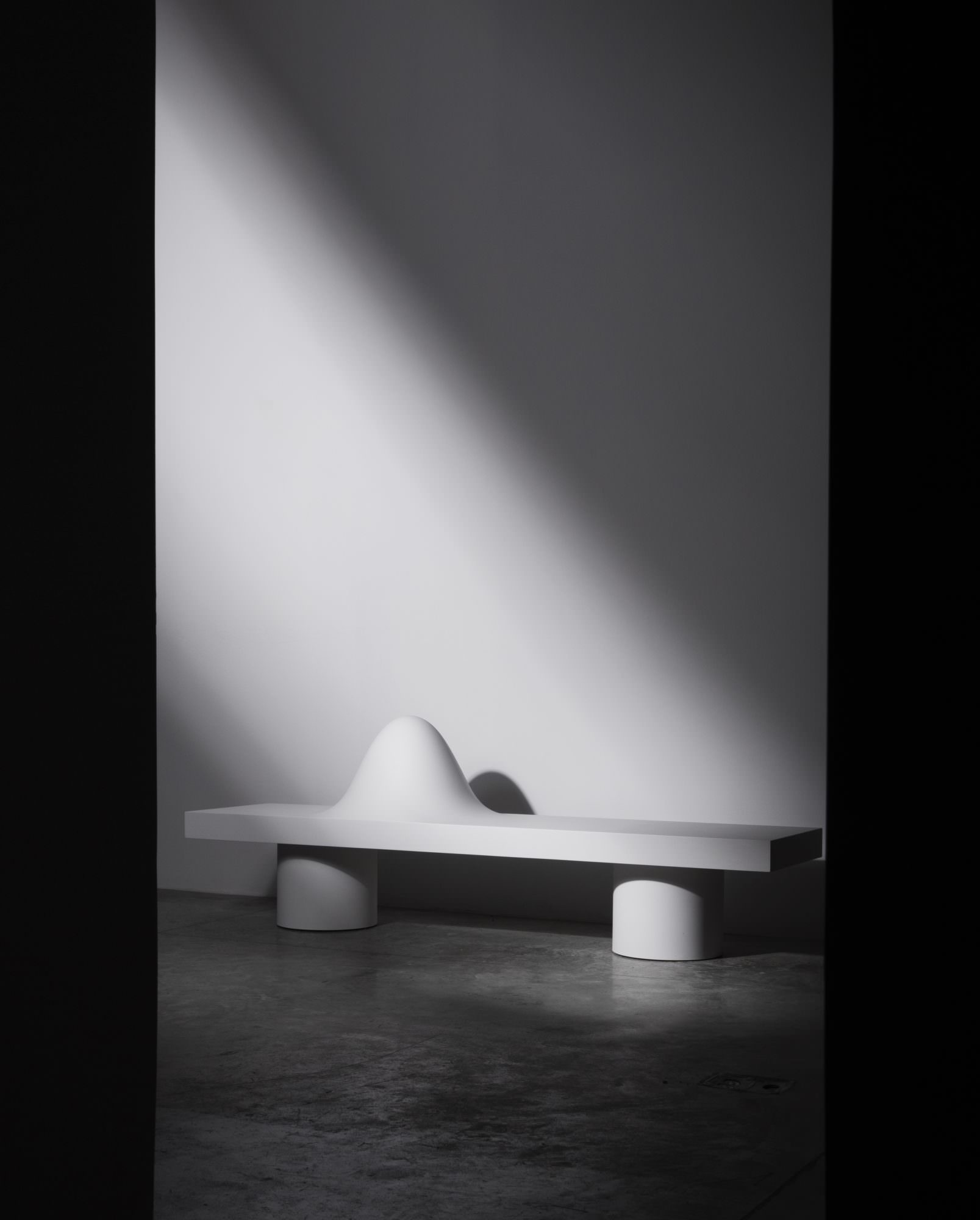 Photo by Steve Benisty
Photo by Steve Benisty
WW: What was the starting point for the “Distortion” series? How did you want to play with the pregnant form?
NEZ: “Distortion” represents the transformation of the body through various stages, which involves paradoxical sensations such as sensuality, femininity, isolation, warmth, and coldness. The starting point of this series came with the need of understanding these changes by dissecting every thought, feeling, and emotion, and expressing them in objects. “Distortion” was illustrated through a series of benches, all experienced differently. For example, one of the benches and its distortion involves the notion of weight, whereas another involves the notion of intimacy.
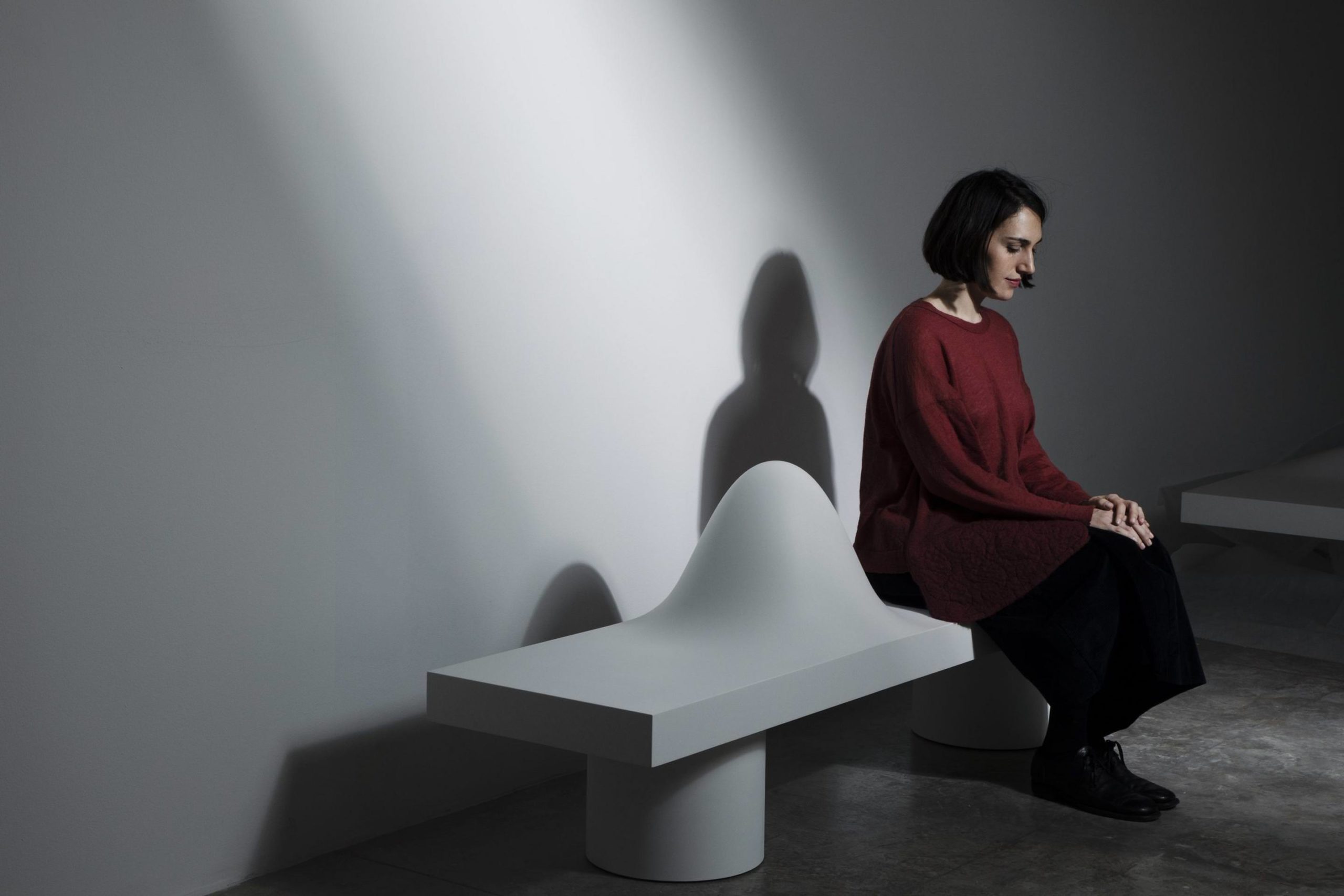 Photo by Steve Benisty
Photo by Steve Benisty
WW: How did that translate well into the material and bench shape?
NEZ: I wanted to use a material that would resonate with the experience I wished to give to the object. The bench is a sharp and bold body that expands into a gentle, round, and seductive form. These are contradictory notions. I chose to use a very fine type of concrete that is extremely cold to the touch yet feels soft, subtle, and mysterious.
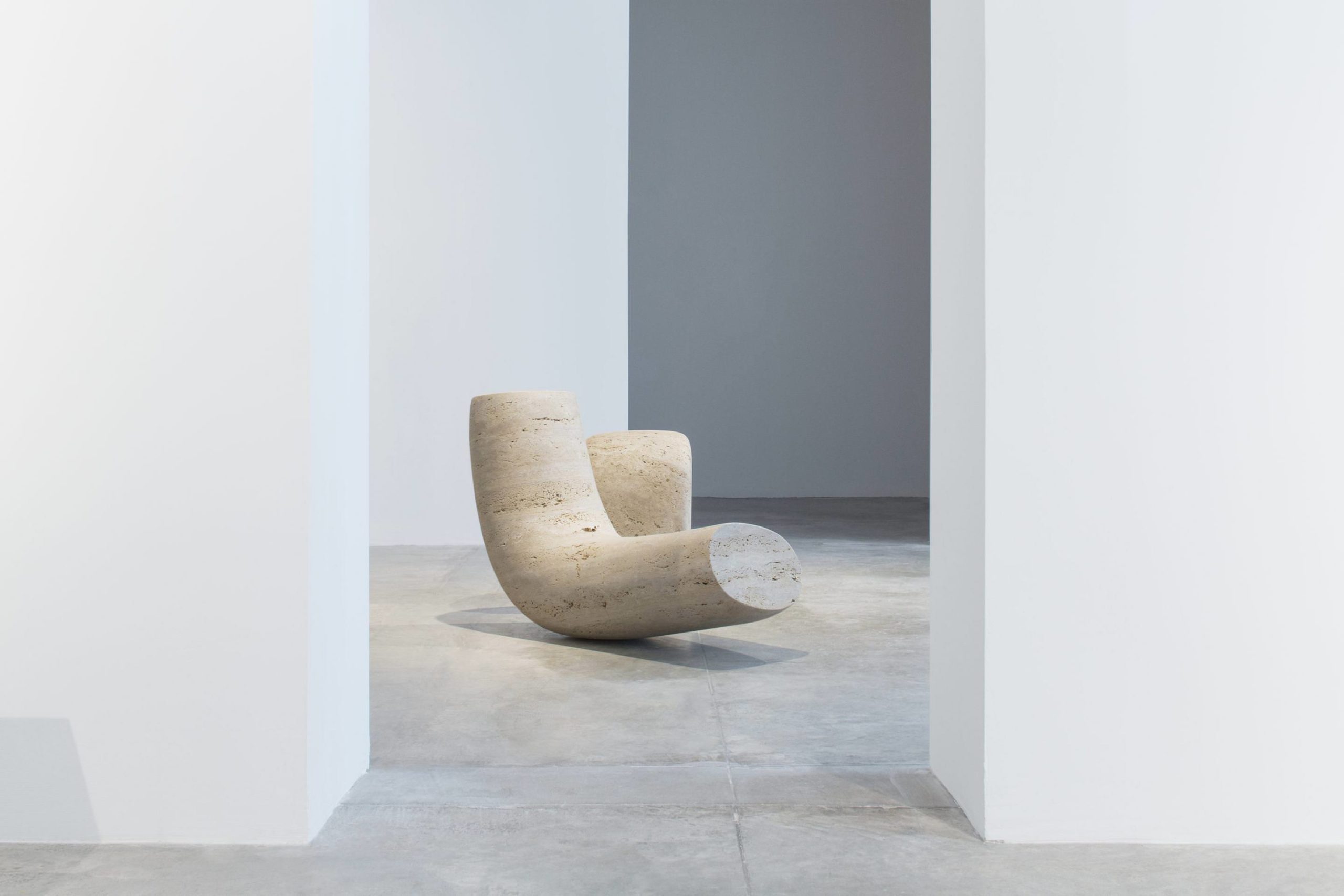 Photography by Daniel Kukla
Photography by Daniel KuklaCourtesy of Najla El Zein and Friedman Benda
WW: “Fragmented Pillar” is inspired by the disturbance of one’s foundation. Why was that something you wanted to explore?
NEZ: Change can create confusion and doubt. The pillar is the mother-structure of any given identity; it’s the foundation. Its disruption would result in the pillar’s fragility, with the revelation of its fragments. I used that metaphor to express this experience of personal change.
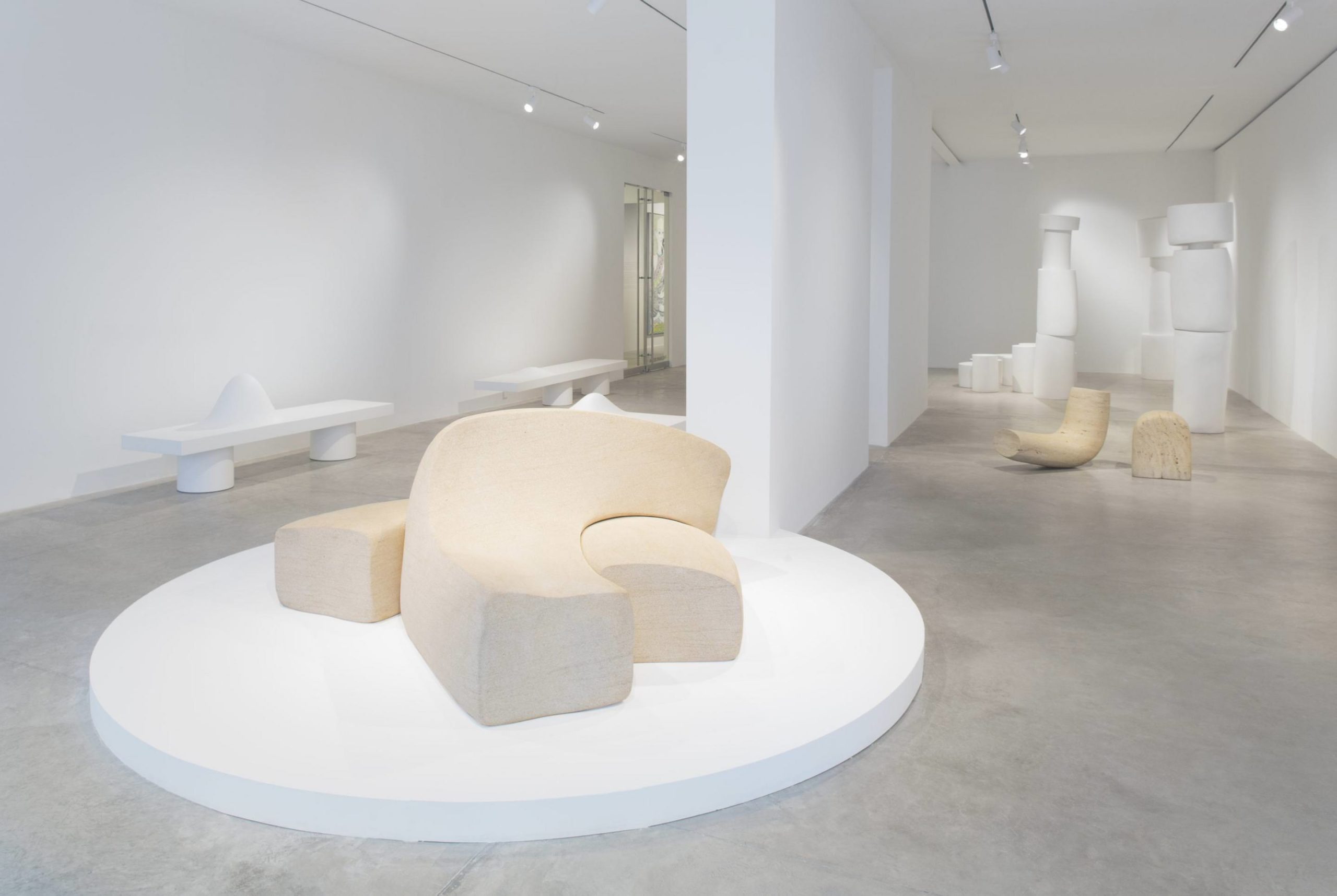 Photography by Daniel Kukla
Photography by Daniel KuklaCourtesy of Najla El Zein and Friedman Benda
WW: Many of those pieces are quite tall. What kind of impact did you want the scale to have?
NEZ: The scale emphasizes the strength of the pillar. It stands still, although it seems to be fragile.
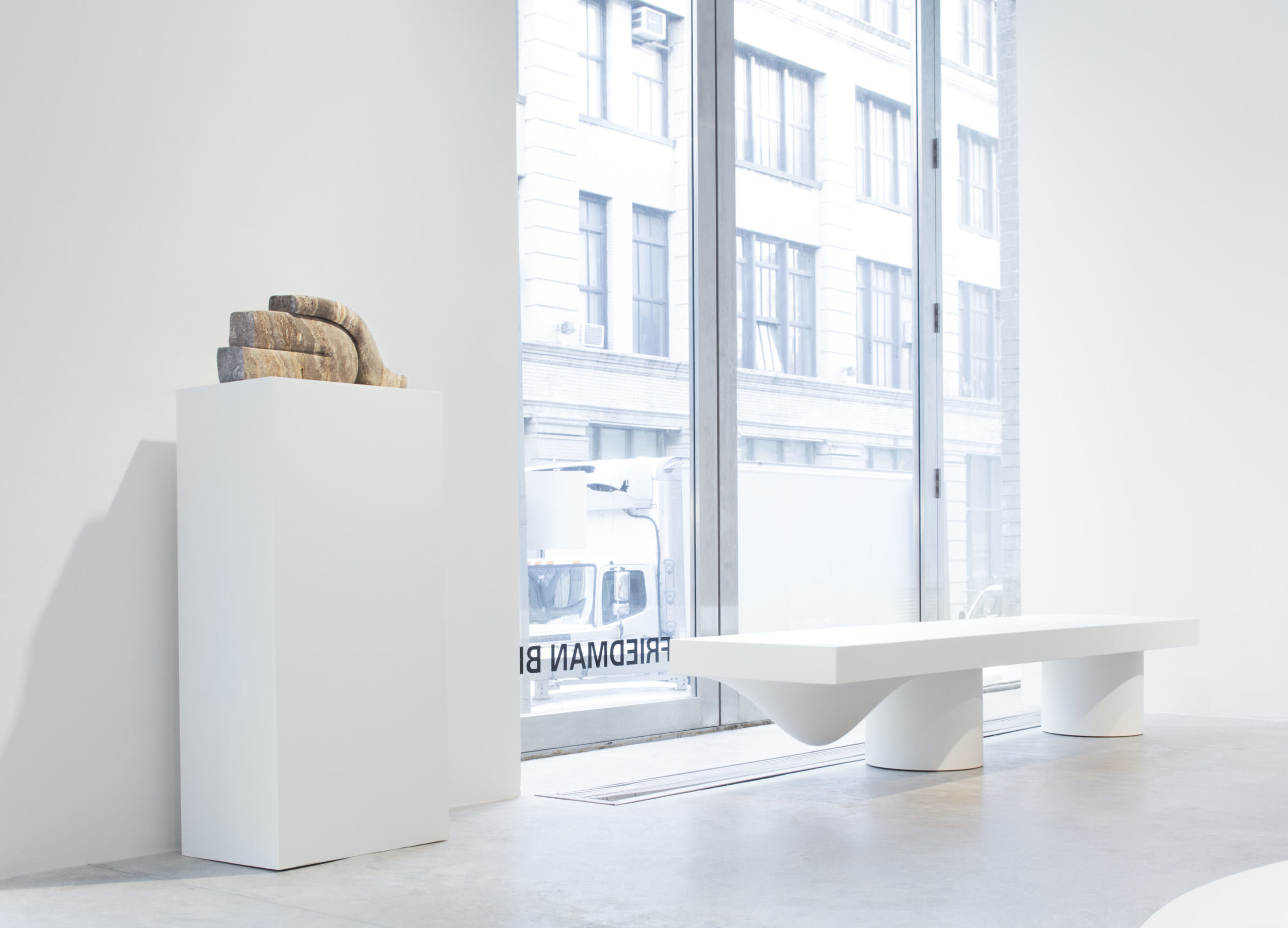 Photography by Daniel Kukla
Photography by Daniel KuklaCourtesy of Najla El Zein and Friedman Benda
WW: How did you want to explore human connection in “Seduction”?
NEZ: “Seduction” tells a transitionary story of proximity between two entities. This is the only series of objects that involves two separate pieces that connect (fit together) or are still separated. This metaphor is a personal reflection of the connection to the other.
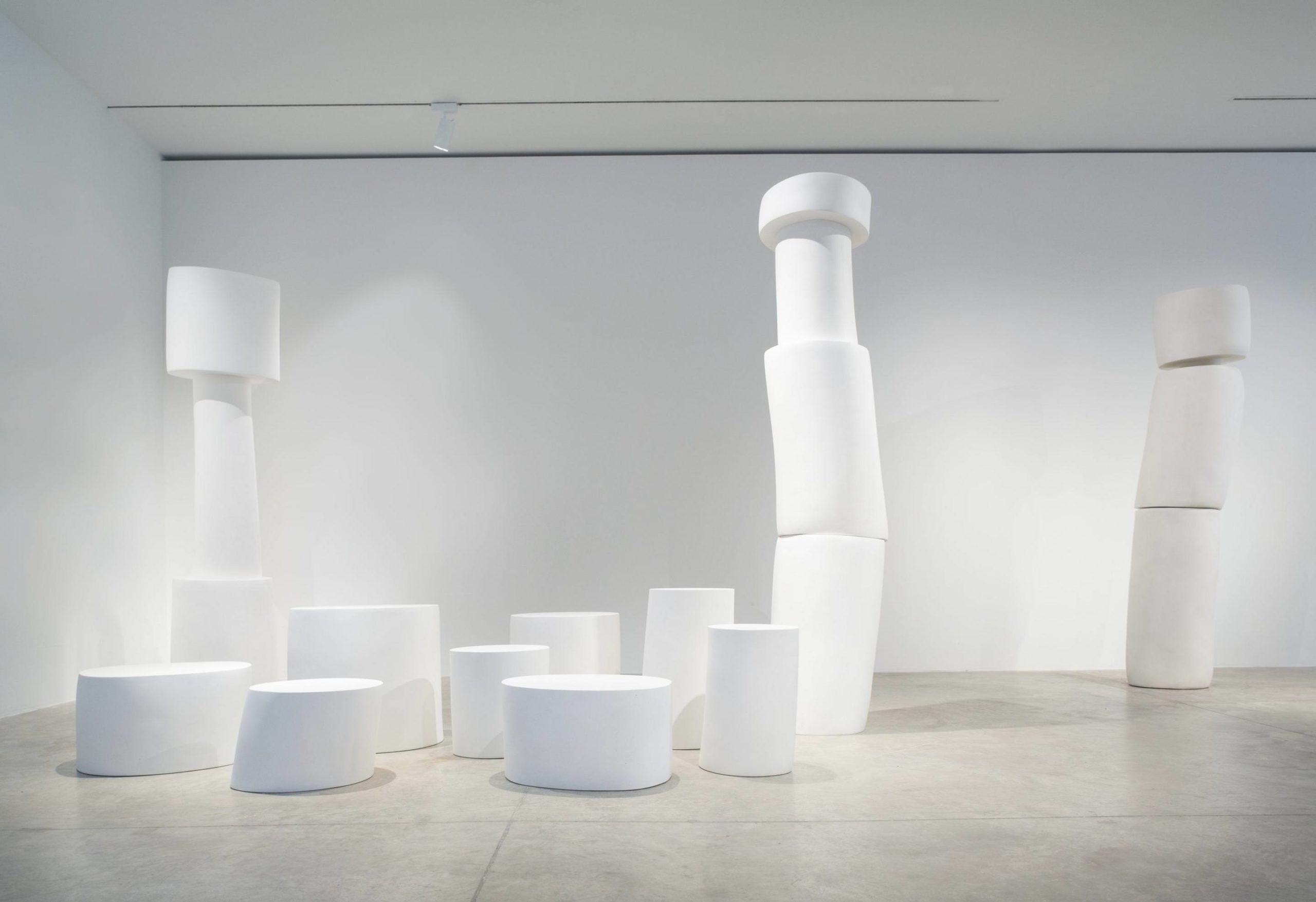 Photography by Daniel Kukla
Photography by Daniel KuklaCourtesy of Najla El Zein and Friedman Benda
WW: Why is each piece made of three stones? And what kind of size did you want to work with?
NEZ: This series involves the use of three different stones: Italian travertine, Iranian travertine, and Niwala sandstone. This transition from one stone to the other was used to express transition through color, form, touch, and materiality.
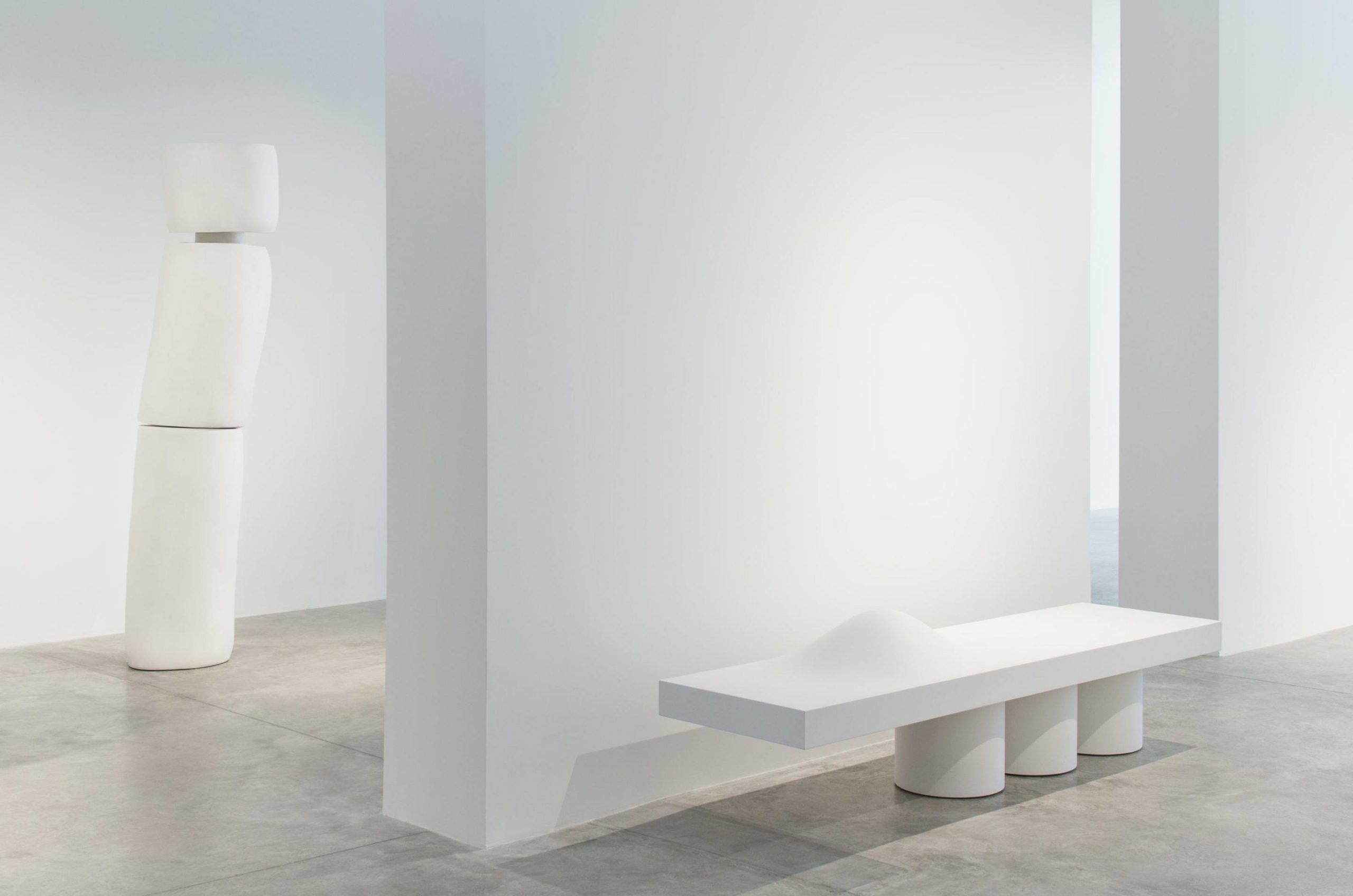 Photography by Daniel Kukla
Photography by Daniel KuklaCourtesy of Najla El Zein and Friedman Benda
WW: How did you choose those materials?
NEZ: The Italian travertine of cool pale brown color represents rigidity. The way the pieces (Seduction, f and Seduction, m) were sculpted took also into consideration the movements of the travertine’s porosity: wavy for the female, linear for the male. These are the only two pieces from the “Seduction” series that do not connect/touch, thus the choice of the stone. Seduction, pair 03 is in the transition mode, where the two pieces start to connect. This is represented with the introduction of color, and a gray Iranian travertine that looks more vivid. Finally, when the Niwala sandstone is used, it was chosen to represent two bodies that are in embrace. The sandstone of nude-type color is evenly textured, holds subtle brown veins that outline the direction of the movements, emphasizing sensuality and lightness.
WW: Your work is so tactile. How do you like to use material to convey feeling?
NEZ: I like my pieces to be touched and experienced. In the case of “Transition,” the material was chosen for the story, but wasn’t used as the main protagonist. I was more interested in combining equally important elements, such as form, silhouette, experience, function, space, material, as a support to the narrative.
WW: Do you feel like this is the most personal you’ve been thus far in your practice? What was that like? Challenging, fulfilling . . . ?
NEZ: It is, and it allowed me to discover many things on the way. I created friendships, too—the gallery, the craftsmen, colleagues. I shared my secrets with these few people who accompanied me through this show, including the closest ones. In return, with their support, they helped me to create these pieces, to understand them, to understand myself, and that was truly liberating, I believe.







